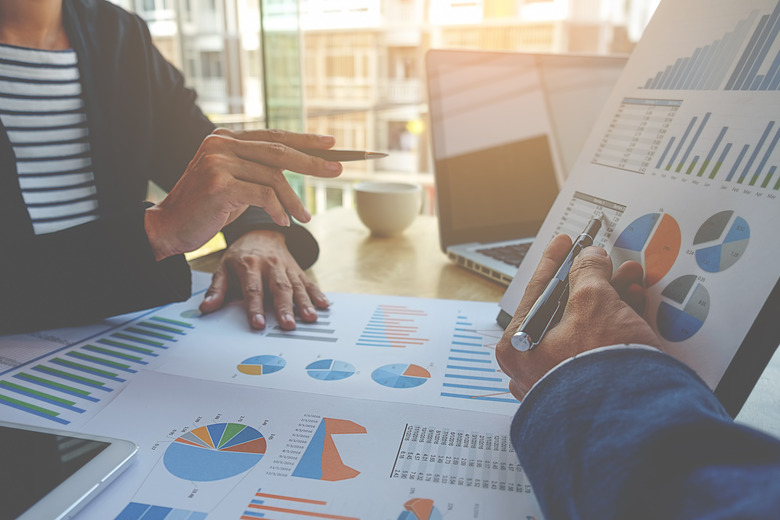The Advantages Of Bar Graphs
Even the most shocking of statistics can look dry or dense when written down in text. That's why many educators and communicators turn to graphs. They are effective tools for helping people visualize and comprehend large amounts of data. There are many different types of graphs, but bar graphs hold several advantages over other types.
TL;DR (Too Long; Didn't Read)
Bar graphs are easy to understand, widely used, and can show changes over time. That gives them an advantage over other graphs that are difficult to read or can only show a single data set.
Bar Graphs
Bar Graphs
Bar graphs, also known as column charts, use vertical or horizontal bars to represent data along both an x-axis and a y-axis visually. Each bar represents one value. When the bars are stacked next to one another, the viewer can compare the different bars, or values, at a glance.
For example, a bar graph might show how smartphone use has changed over time. Along the vertical axis, or axis Y, the maker of the graph would plot a quantitative or numerical scale such as smartphone users by the millions. On the horizontal axis, or axis X, the graph maker might plot a category, such as years from 2005 to 2015. In this way, viewers can easily see how many millions of people started using smartphones during each of those years and whether that number steadily increased or decreased over time.
Easily Understood
Easily Understood
Because bar graphs have been in widespread use everywhere from textbooks to newspapers, most audiences understand how to read a bar graph and can grasp the information the graph conveys.
Other types of graphs, such as those with compressed scales, matrix graphs or MTF charts, are difficult to read for someone who isn't already familiar with that type of data visualization. Its simplicity makes a bar graph a good choice when you're trying to get your data across to large groups of people.
Mapping Changes Over Time
Mapping Changes Over Time
Another advantage to using bar graphs is their ability to represent data that shows changes over time, which helps people visualize trends.
Other graphs, such as pie charts, can only represent one data set. For instance, someone might ask 100 people what their favorite meal at McDonald's is and then show the percentages of people who prefer the different food options. A bar graph could be useful for people who want to show how McDonald's preferences have changed over time. People could look at the bar graph and see which meal customers prefer to eat now and compare that information to the meal that customers opted for in 1970. That historical context can lead to a greater understanding of the data and why it is important.
Cite This Article
MLA
Dragani, Rachelle. "The Advantages Of Bar Graphs" sciencing.com, https://www.sciencing.com/advantages-bar-graphs-6822794/. 11 May 2018.
APA
Dragani, Rachelle. (2018, May 11). The Advantages Of Bar Graphs. sciencing.com. Retrieved from https://www.sciencing.com/advantages-bar-graphs-6822794/
Chicago
Dragani, Rachelle. The Advantages Of Bar Graphs last modified March 24, 2022. https://www.sciencing.com/advantages-bar-graphs-6822794/
